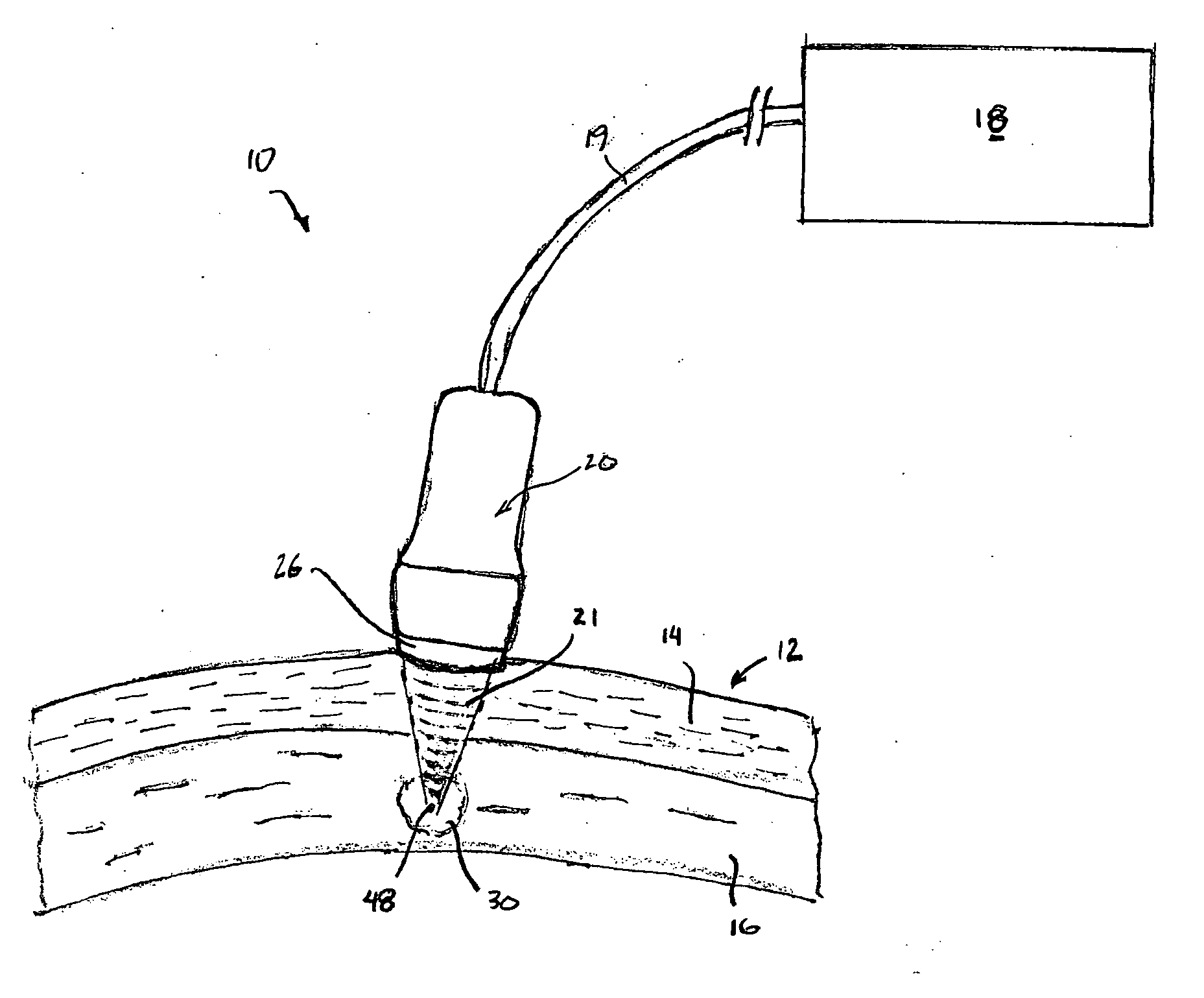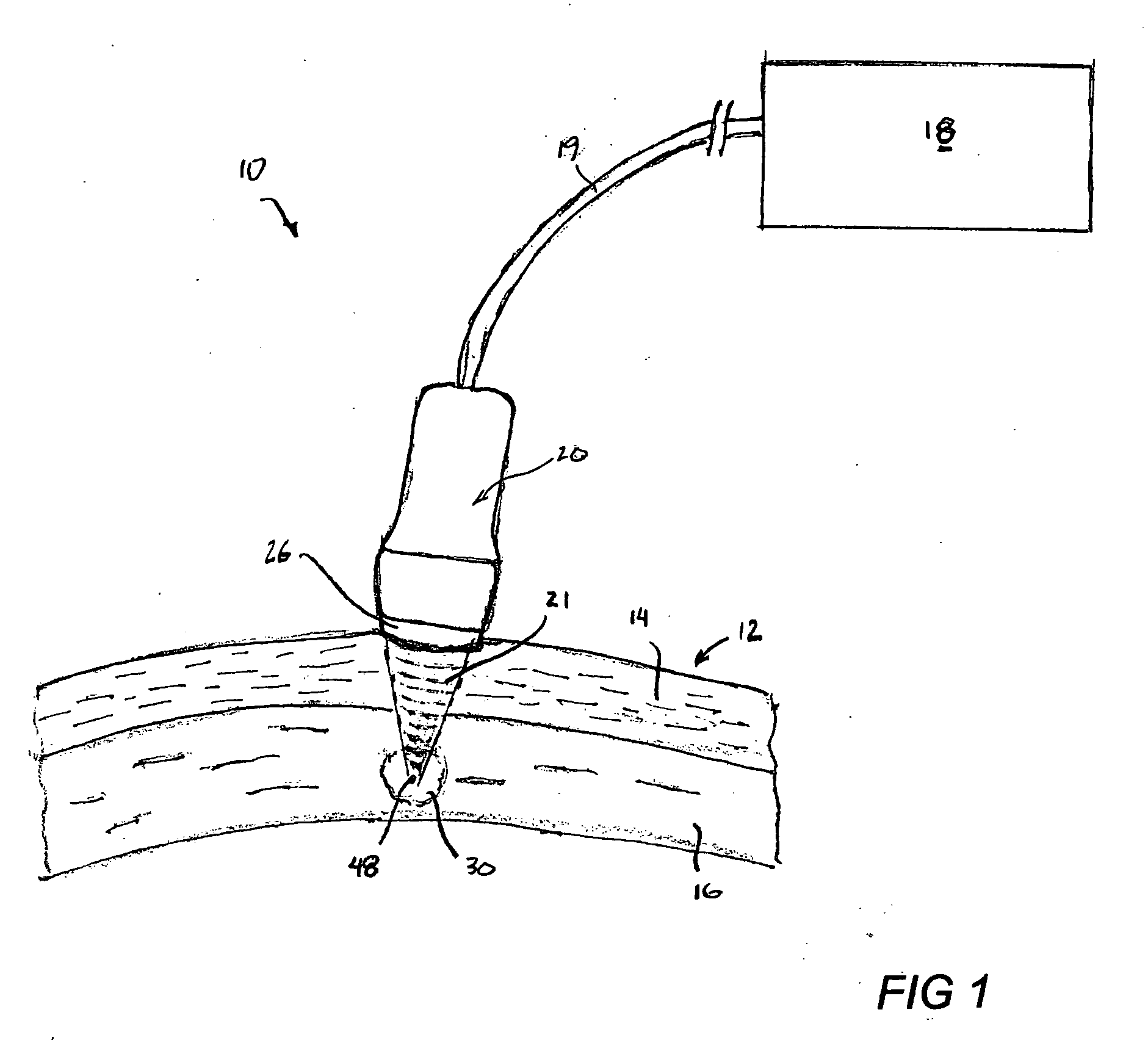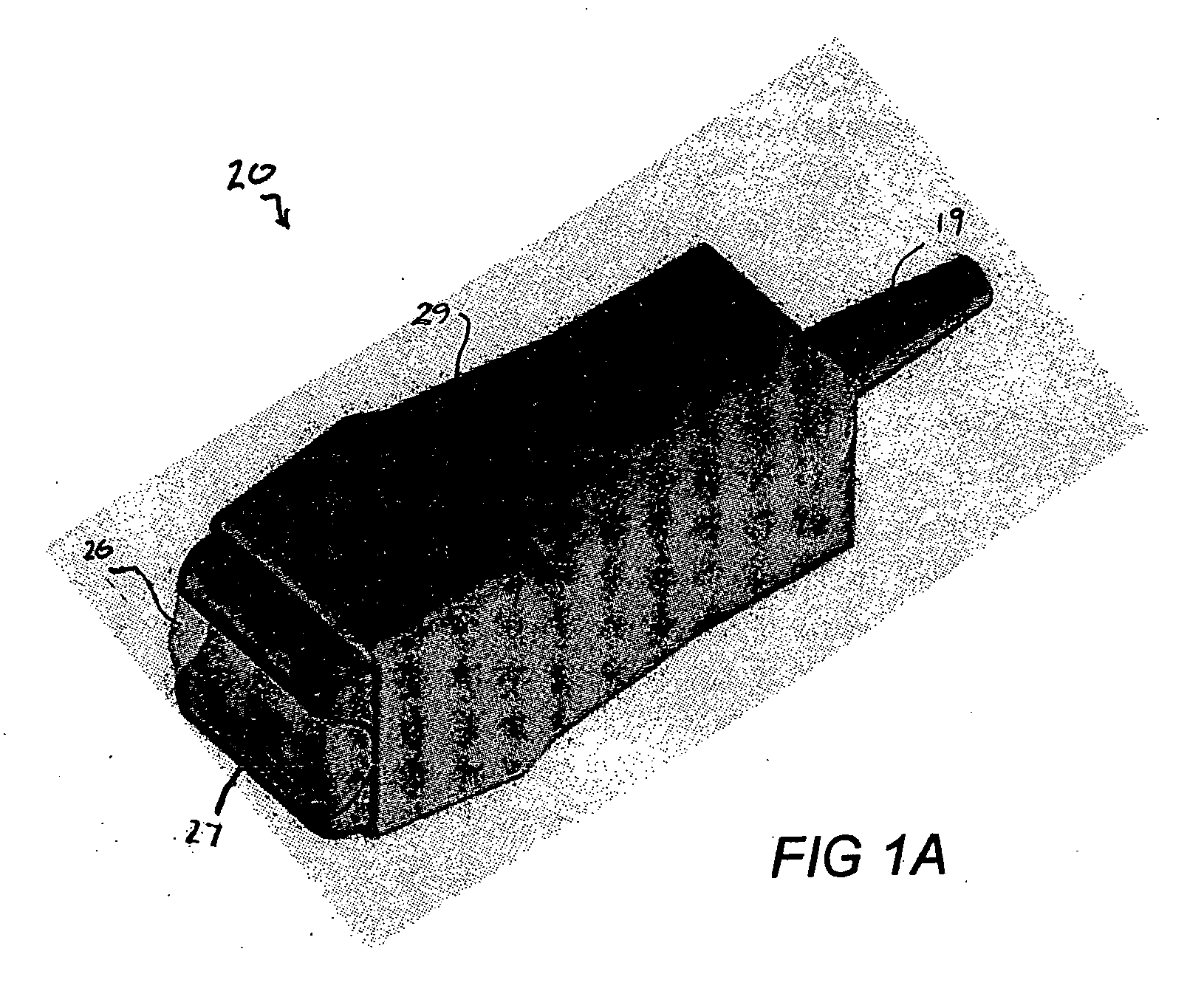Treatment of skin with acoustic energy
a skin and acoustic energy technology, applied in the field of skin treatment, can solve the problems of significant pain, patient discomfort, and significant damage to the epidermis and dermis layers, and achieve the effects of reducing the possibility of injury, high intensity contrast, and reducing the possibility of damage to the underlying bone or other tissue structures
- Summary
- Abstract
- Description
- Claims
- Application Information
AI Technical Summary
Benefits of technology
Problems solved by technology
Method used
Image
Examples
Embodiment Construction
[0055]FIG. 1 generally illustrates an ultrasound generating apparatus 10 that can be used to apply controlled, localized, focused ultrasound to a region of human skin. The apparatus includes a control circuit 18 coupled to handpiece 20 via electrical means 19 which can be a cable or the like. The handpiece includes one or more transducer elements as will be described in more detail below. In response to control signals from control circuit 18, the handpiece 22 generates ultrasound waves 21. Handpiece 22 can have one or more elements, such as piezoelectric elements, that actually produce the ultrasound or similar acoustic waves as well as one or more focusing elements. The handpiece also includes an acoustically-transmitting waveguide 26 having a skin contacting surface, although in some applications it can be desirable to employ an acoustical coupling medium, such as a biocompatible hydrogel between the surface of the waveguide and the skin.
[0056] Apparatus 10 is used to direct the...
PUM
 Login to View More
Login to View More Abstract
Description
Claims
Application Information
 Login to View More
Login to View More - R&D
- Intellectual Property
- Life Sciences
- Materials
- Tech Scout
- Unparalleled Data Quality
- Higher Quality Content
- 60% Fewer Hallucinations
Browse by: Latest US Patents, China's latest patents, Technical Efficacy Thesaurus, Application Domain, Technology Topic, Popular Technical Reports.
© 2025 PatSnap. All rights reserved.Legal|Privacy policy|Modern Slavery Act Transparency Statement|Sitemap|About US| Contact US: help@patsnap.com



